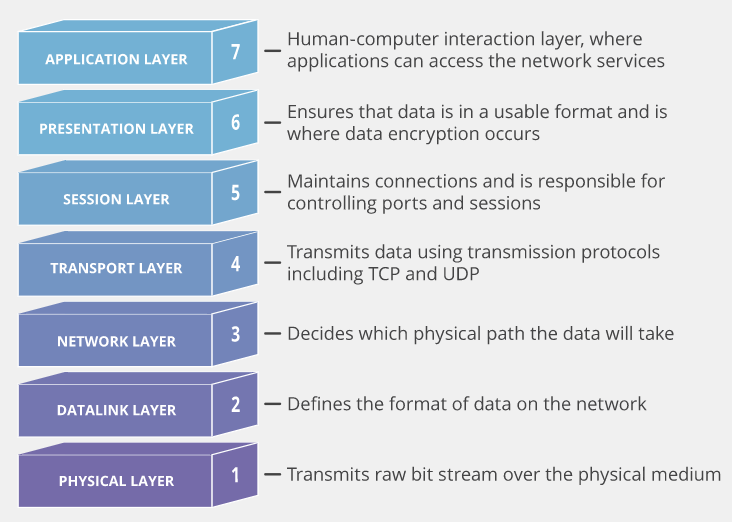OSI model: Difference between revisions
Mr. MacKenty (talk | contribs) No edit summary |
Mr. MacKenty (talk | contribs) |
||
| Line 19: | Line 19: | ||
<html> | <html> | ||
<iframe width="560" height="315" src="https://www.youtube.com/embed/laZMnoKMrHA" frameborder="0" allowfullscreen></iframe> | <iframe width="560" height="315" src="https://www.youtube.com/embed/laZMnoKMrHA" frameborder="0" allowfullscreen></iframe> | ||
</html> | </html> | ||
Revision as of 10:23, 19 September 2022

Please Do Not Touch Steve’s Pet Alligator!!
The Open Systems Interconnection model (OSI model) is a conceptual model that characterizes and standardizes the communication functions of a network [2]. The Open Systems Interconnection (OSI) model is a conceptual model created by the International Organization for Standardization which enables diverse communication systems to communicate using standard protocols. In plain English, the OSI provides a standard for different computer systems to be able to communicate with each other.
The OSI model can be seen as a universal language for computer networking. It’s based on the concept of splitting up a communication system into seven abstract layers, each one stacked upon the last.[3]
There are two things you need to do here: 1. simply state two layers (just their names) 2. you MUST be able to describe how communication is broken down into layers
Graphic[edit]
I use this excellent diagram from Cloudflare[4]

Video[edit]
Standards[edit]
- Describe how communication over networks is broken down into different layers.
- List the stages in the OSI model